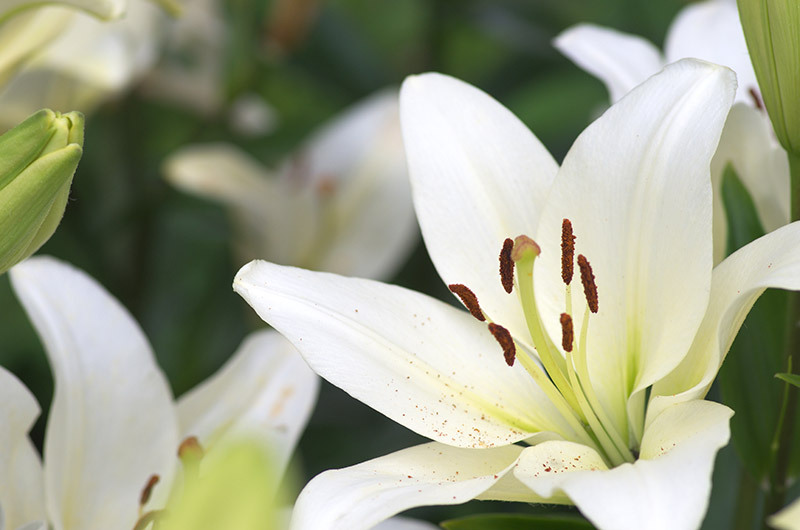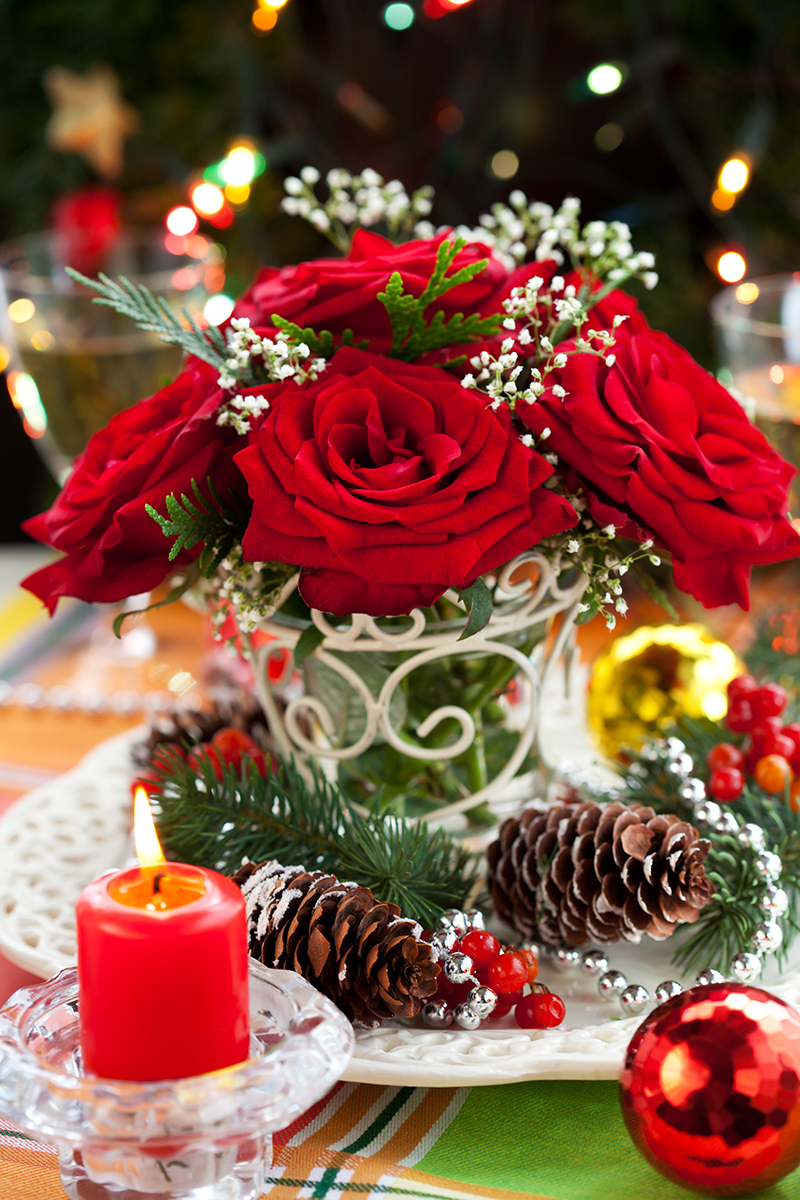Master the Art of Caring for Cut Flowers
Posted on 09/09/2025
Master the Art of Caring for Cut Flowers: The Ultimate Guide
Fresh cut flowers add vibrant color and fragrant beauty to any home. Whether you're treating yourself to a weekly bouquet or enjoying a special arrangement from a loved one, learning how to master the art of caring for cut flowers will ensure you enjoy their bloom for as long as possible. In this comprehensive guide, we'll delve into proven techniques, address common mistakes, and share the best strategies for extending the life of your beloved flowers.
Why Proper Flower Care Matters
Caring for cut flowers isn't just about aesthetics--it's about curating an uplifting atmosphere and maximizing your investment. Flowers are living things, and with the right attention, you can extend their lifespan dramatically. Understanding what your flowers need paves the way for lasting arrangements and vibrant displays.
- Enhance the longevity of your floral arrangements
- Preserve the beauty and fragrance of every bouquet
- Reduce waste and get more value from your purchase
- Impress guests and enjoy a serene atmosphere at home

The Essentials of Caring for Cut Flowers
Whether you're working with a bunch of tulips, roses, or mixed wildflowers, the fundamentals remain the same. Let's dive into the key steps for taking care of cut flowers like a pro.
1. Always Start with a Clean Vase
Bacteria is the quiet killer of cut flowers. Before arranging your bouquet, it's essential to thoroughly clean your vase with hot, soapy water, rinsing away residues and potential contaminants. For extra freshness, swish in a tiny bit of bleach diluted with water to remove stubborn microbes.
2. Trim Flower Stems Properly
- Use a sharp, clean knife or pruning shears--never scissors, as they can crush stems.
- Cut 1-2 inches from the bottom of the stem at a 45-degree angle. This increases surface area for water absorption and prevents the end from sitting flat against the vase.
- If stems look dried out, re-cut them under running water to reduce air bubbles, which can block water uptake.
3. Remove Foliage Below the Water Line
Any leaves sitting below the water's surface will rot quickly, releasing bacteria that shorten your flower's lifespan. Strip away all lower foliage before arranging.
4. Use the Right Water Temperature
- Room temperature water suits most varieties.
- For bulb flowers (like tulips, daffodils, hyacinths), use cool water to help maintain freshness.
- Warm water encourages roses and woody stems to absorb water more quickly at first. After several hours, replace with fresh, cool water.
Enhancing Longevity: Tips for Long-Lasting Cut Flowers
Want to become a master at floral care? Use these expert methods to keep your arrangements gleaming day after day.
Feed Your Flowers
That little flower food packet bundled with supermarket bouquets isn't just a gimmick. It contains sugars for nourishment, citric acid to reduce pH, and bleach-like ingredients to limit bacteria--everything your cut blooms crave!
- If you run out of commercial flower food, make your own: Add 1 teaspoon of sugar, 2 teaspoons of lemon juice, and a few drops of household bleach to 1 quart/liter of water. Mix thoroughly.
- Change the water and add fresh flower food every 2-3 days for maximum outcome.
Location, Location, Location!
- Keep cut flowers away from direct sunlight, heating vents, and appliances--heat speeds wilting.
- Avoid placing vases near ripening fruit, which exudes ethylene gas and shortens bloom life.
- Cool, shaded spots create ideal indoor conditions.
Daily Maintenance Matters
- Check water levels each day--fresh flowers are thirsty!
- Top up with clean water as required.
- Remove any wilted stems or blooms to prevent them from spreading mold or bacteria.
Advanced Techniques for Caring for Cut Flowers
Extend Life with Refrigeration
Want your bouquet to last for an event? Place your arrangement in the fridge overnight. Cooler temperatures slow down flower metabolism, extending their life by several days. Just make sure to remove fruits from the fridge to avoid damaging your blooms with ethylene gas.
Reviving Wilting Flowers
- Re-cut stems and immerse them in warm water for half an hour to help them rehydrate.
- Splashing petals and leaves lightly with water can temporarily perk them up.
- Woody stems (roses, hydrangeas) sometimes benefit from splitting or lightly crushing the bottom two inches of the stem after trimming for better water absorption.
Special Care for Different Flower Types
Not all flowers are alike. Some blooms require unique attention for the best results:
- Tulips continue to grow after being cut and will curve toward a light. To keep stems straight, drop a penny in the vase and avoid overfilling with water.
- Daffodils release sap that can harm other flowers--let them stand alone for several hours in fresh water before mixing in a bouquet.
- Hydrangeas are especially thirsty. Submerge the entire head in water for 15-20 minutes if they wilt, then re-cut the stem.
- Roses benefit from de-thorning and removing guard petals before arranging.
- Gerbera daisies often droop--use floral wire in the stems for added support.
Should You Use Additives?
Household hacks abound for caring for cut flowers--perhaps you've heard of using aspirin, vodka, or coins in the vase. While such remedies may sometimes help, nothing beats changing water regularly and using a proven flower preservative. Stick to the basics for best results.
Common Mistakes When Caring for Cut Flowers
To truly master the art of caring for cut flowers, be aware of these common pitfalls:
- Neglecting to change water frequently
- Leaving foliage submerged
- Placing arrangements in hot or sunny spots
- Under- (or over-) filling the vase
- Using dull tools that crush stems
- Skipping the re-cutting process for delivered bouquets
Sustainability Tips: Keep Cut Flowers Eco-Friendly
- Choose locally grown, seasonal flowers to minimize carbon footprint.
- Compost spent blooms and wilted leaves--never send them to landfill.
- Repurpose wilted flowers for potpourri or pressed art.
- Limit use of single-use plastics by purchasing from eco-conscious florists.

Frequently Asked Questions about Caring for Cut Flowers
How often should I change the water in my vase?
Change the water every 2-3 days (or sooner if it appears cloudy or foul). Fresh water helps prevent bacteria and extends flower life.
Can I use tap water for caring for my cut flowers?
Absolutely. Tap water is usually fine. If your tap water is especially hard or contains lots of dissolved minerals, you might opt for filtered water.
Should I trim flower stems every few days or just once?
Trimming stems every couple of days ensures the ends remain open for water uptake. Always re-cut about half an inch off the bottom, and do it under running water for best results.
Is there a difference between caring for store-bought versus homegrown cut flowers?
The basics remain the same. However, homegrown blooms are often fresher and will last longer, while store-bought bouquets may require more initial TLC due to time spent in transit.
Conclusion: Enjoy Your Blooms to the Fullest
Mastering the art of caring for cut flowers is a rewarding skill that brings the beauty of the garden directly into your living space. With knowledge, attention, and the right techniques, you can transform every bouquet into a long-lasting masterpiece. Every flower is unique, and each display offers a fresh opportunity to refine your approach. With the tips in this guide, you'll enjoy healthier, fresher flowers and become a true floral connoisseur.
Take a moment every day to care for your arrangements, and you'll find not only will your flowers last longer, but you'll also deepen your appreciation for the natural beauty they bring.
Ready to start your cut flower care journey? With these expert strategies, you're equipped to master the art of flower arrangement longevity and enjoy the uplifting power of fresh blooms day after day.
Latest Posts
Master the Art of Caring for Cut Flowers
Discover the Top 12 Flowers for Long-Lasting Beauty
Unveil the Hidden Mysteries of Tulips with These 7 Facts
Discover 3 effortless methods to keep your flowers fresh and vibrant







